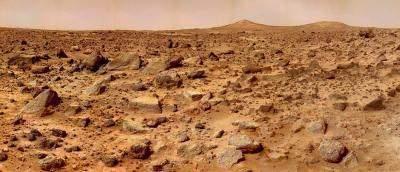Scientists have determined that a wind-driven “tumbleweed” Mars rover would be more than capable of effectively navigating rocky Martian terrain.
“There is quite a bit of interest within NASA to pursue the tumbleweed rover design, but one of the questions regarding the concept is how it might perform on the rocky surface of Mars,” explained Dr. Andre Mazzoleni of North Carolina State University. “And we set out to address that question.”

Indeed, Mazzoleni and Dr. Alexander Hartl, an adjunct professor of MAE at NC State, developed a computer model to determine how varying the diameter and mass of a tumbleweed rover would affect its speed and ability to avoid getting stuck in Martian rock fields. Rock fields are common on the surface of Mars, which averages one rock per square meter.
“We found that, in general, the larger the diameter, and the lower the overall weight, the better the rover performs,” Mazzoleni confirmed.
“We also found that a tumbleweed rover would need to have a diameter of at least six meters in order to achieve an acceptable level of performance – meaning the rover could move through rock fields without getting stuck.”
Using the model, the researchers also discovered tumbleweed rovers are more likely to bounce than roll across the surface – due to the spacing of the rocks and the size of the rovers.
“Computer simulations are crucial for designing Mars rovers because the only place where you find Martian conditions is on Mars,” says Mazzoleni. “Earth-based testing alone cannot establish whether a particular design will work on Mars.”

To be sure, Mars has approximately three-eighths of Earth’s gravity – with an atmospheric density on the surface that is only duplicated around 100,000 feet above the Earth’s surface.
Tumbleweed rovers are attractive because they can cover much larger distances, and handle rougher terrain, than the rovers that have already been sent to Mars – such as Spirit and Opportunity.
While tumbleweed rovers would lack the precise controls of wheeled rovers, they wouldn’t be dependent on a power supply for mobility – being literally blown across the Martian landscape by the wind.






